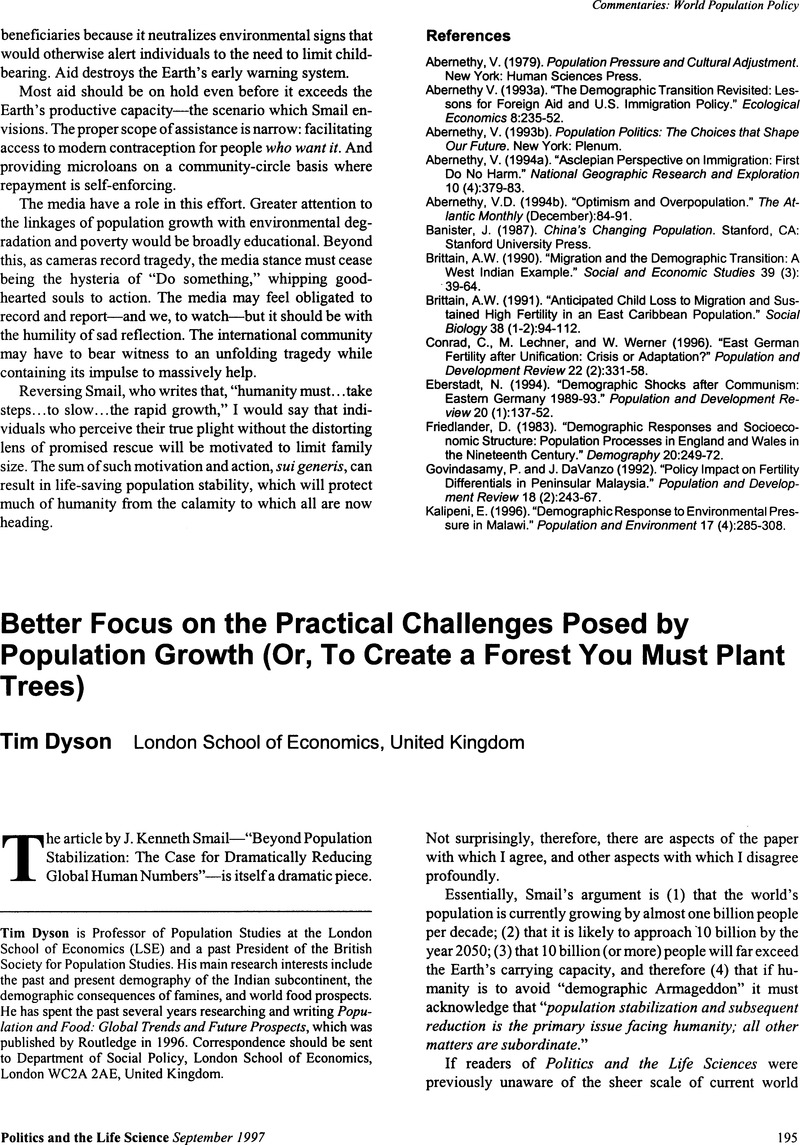No CrossRef data available.
Article contents
Better Focus on the Practical Challenges Posed by Population Growth (Or, To Create a Forest You Must Plant Trees)
Published online by Cambridge University Press: 17 May 2016
Abstract
An abstract is not available for this content so a preview has been provided. Please use the Get access link above for information on how to access this content.

- Type
- Roundtable Commentaries
- Information
- Copyright
- Copyright © Association for Politics and the Life Sciences
References
Bongaarts, J. (1994). “Population Policy Options in the Developing World.” Science 263:771–76.Google Scholar
Brown, L.R. and Kane, H. (1994). Full House: Reassessing the Earth's Population Carrying Capacity. London: Earthscan.Google Scholar
Dyson, T. (1996). Population and Food: Global Trends and Future Prospects. New York and London: Routledge.Google Scholar
Mitchell, D.O., Ingco, M.D., and Duncan, R.C. (1997). The World Food Outlook. Cambridge: Cambridge University Press.Google Scholar
Potts, M. (1997). “Sex and the Birth Rate: Human Biology, Demographic Change, and Access to Fertility-Regulation Methods.” Population and Development Review 23:1–39.Google Scholar
World Resources Institute (1996). World Resources 1996-97. New York: Oxford University Press.Google Scholar


